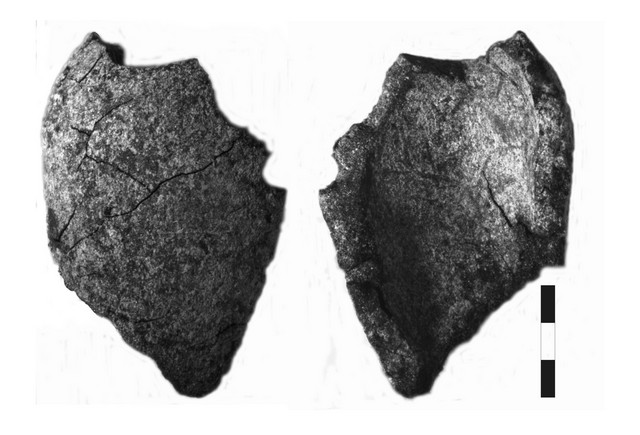During the 2009 excavation season, the archaeobotanical studies at the site continued with extensive sampling of all of the excavated locations in order to get more representative information on the plant economy of the city of Sagalassos and its Iron Age predecessor Tepe Düzen. A total of 75 flotation and 23 wood charcoal samples were sorted under binocular (low magnification microscope) and prepared for further study in the archaeobotanical laboratory of the Center for Archaeological Sciences (CAS) of the K.U.Leuven. Additional samples have been processed with the flotation machine on the site until the end of the 2009 campaign.
In the following a brief record is given, by excavation area, of the archaeobotanical finds identified thus far:
Domestic Area
The numerous samples collected from this area yielded a wide diversity of material. The most common crop plant in the samples is the hulled barley (Hordeum vulgare var vulgare). Also numerous are the finds of leaves of fir (Abies cilicica – Figure 1) whereas only few were recovered of pine (Pinus sp.) and cedar (Cedrus libani). These finds indicate that the deposited charred material most probably represents the refuse of domestic ovens or fire places mixed with some cooking remains. Evidence for degradation and disturbance of the vegetation are the frequently occurring Astragalus sp. (Figure 2), which most probably originated from the thorny species of this genus belonging to the anthropogenic induces steppe in the study area.
Roman Baths
The samples studied until now from RB1 originate from loci 114 and 120 and contained no seed/fruit material. The material from RB2, locus 33, service rooms, consists only of coniferous wood and its homogeneity indicates that it probably originates from construction wood. This hypothesis should be confirmed after further analysis of the wood in laboratory conditions.
Macellum
Five samples from the 2008 excavations from the Macellum were sorted this year and in most cases were rich in material. In all of them barley and bread/macaroni wheat were found. Also some remains of fruit plants like grape (Vitis vinifera) and mulberry (Morus sp.) were available. Of special interest is the find of stone pine (Pinus pinea – Figure 3). It originates from room 7, locus 169. The stone pine was highly estimated by the Romans and was in many cases part of rituals and burial offerings.
Colonnaded Street
The two samples (locus 200 and 212) that were analysed until now from the Colonnaded Street are rich in various materials. The prevailing plant macroremains are grains of barley. In one of the samples from locus 200 also fragments of the fruit of almond (Amygdalus sp.) were available. Considering their morphological features and their size this were most probably remains of the cultivated form of almond, but it should be stressed that as the remains are preserved as fragments it is not possible to say with certainty if this was cultivated almond or some of the wild forms growing in the study area.
Potters Quarter
From the samples from the PQ the richest are the two originating from locus 222, space 9. In these samples barley and wheat were found and together with them also remains of different fruits. These are walnut (Juglans regia), plum (Prunus sp.), and elder (Sambucus cf. nigra). They represent typical refuse of food consumption. For this speaks also the absence on any crop processing remains among the finds.
Bouleuterion
The 4 samples studied until now were rich in wood charcoal, but almost no seed and fruit remains were preserved.
Tepe Düzen
The numerous archaeobotanical samples from Tepe Düzen inform us about the main crop plants used on this Iron Age site. They consist of the typical Late Iron Age cereal crops of the Mediterranean, namely bread wheat and hulled barley. This year also remains of hulled wheat – emmer were available. The spectrum of pulses represented by pea and bitter vetch in the previous excavation seasons was enlarged by chick pea (Cicer arietinum). This finds comes from a vessel from locus 26, vessel content in TD1. The potential oil crop Lalemantia sp. (Figure 4) was recovered in several samples again. This repeated evidence suggests that it cannot be excluded that it was used as oil crop during the occupation of Tepe Düzen. In the archaeobotanical samples also pit fragments of olive (Olea europea) (TD2, 48-18) and charred remains of whole fig (Ficus carica) fruit (TD2 48-24, 48-12) were available. The few remains of olive (until now this is the second olive stone fragment) in Tepe Düzen indicate that no processing of olives took place at the site.






Hi i just thought I should leave a comment as i really admireyour site its so interesting, keep it up!